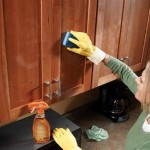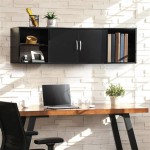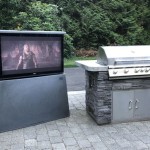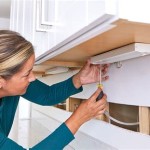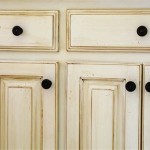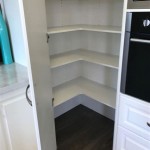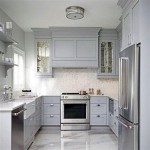Review of Menards Unfinished Cabinets 2024
Menards is a popular home improvement retailer offering a wide array of products, including unfinished cabinets. In 2024, its selection continues to be a relevant option for homeowners and contractors looking for affordable and customizable cabinetry solutions. This review provides an in-depth look at Menards' unfinished cabinets, covering aspects such as materials, construction quality, styles, pricing, and considerations for finishing. The information presented aims to equip potential buyers with the knowledge needed to make an informed decision about whether Menards' unfinished cabinets are suitable for their specific project needs.
Unfinished cabinets present a distinct advantage: the ability to personalize the finish. This allows homeowners to match existing décor, achieve a specific aesthetic, or even save money by completing the finishing process themselves or hiring a professional finisher at a potentially lower cost compared to purchasing pre-finished cabinets. Menards' offerings in this area cater to a broad segment of the market, from budget-conscious DIYers to those seeking a more tailored, high-end look without the premium price tag associated with completely custom cabinetry.
Materials and Construction
The quality of materials and construction are paramount when evaluating any type of cabinet. Menards' unfinished cabinets are typically constructed from various materials, including solid wood, plywood, and particleboard. Solid wood is often used for face frames and door frames, providing durability and a traditional aesthetic. The use of solid wood in these visible areas can contribute to the overall perception of quality.
Plywood is frequently employed for cabinet boxes (sides, top, bottom, and back). Plywood offers greater stability and resistance to warping compared to particleboard, especially in environments with fluctuating humidity levels. The number of plies in the plywood can also be an indicator of quality, with more plies generally denoting greater strength and stability. Examining the specifications of the plywood used in a particular cabinet line is crucial for assessing its long-term performance.
Particleboard, also known as furniture board, is sometimes used for cabinet boxes and shelving, particularly in more budget-friendly options. While particleboard is less expensive than plywood, it is also more susceptible to moisture damage and may not hold screws as securely. The density of the particleboard significantly impacts its durability and resistance to sagging under load. Understanding the specific materials used in each cabinet component allows buyers to weigh the trade-offs between cost and longevity.
Construction methods also play a critical role. Dovetail joints, known for their strength and durability, are often used in drawer boxes in higher-quality cabinets. Other common joinery methods include dadoes, rabbets, and screws. The precision and tightness of these joints contribute to the overall structural integrity of the cabinet. Soft-close hinges and drawer slides are desirable features that enhance the user experience and prevent slamming, extending the lifespan of the cabinets.
Examining the cabinet's construction details, such as the thickness of the panels, the type of joinery used, and the quality of the hardware, is essential. This assessment can provide insights into the cabinet's durability and its ability to withstand daily use. Consulting product specifications and, if possible, examining the cabinets in person can help determine if the construction quality aligns with the intended use and budget.
Styles and Configurations
Menards offers a variety of unfinished cabinet styles to suit different design preferences. These styles typically range from traditional raised-panel doors and Shaker styles to more contemporary slab doors. The availability of different styles allows homeowners to select cabinets that complement the architectural style of their home and their personal taste.
Raised-panel doors feature a decorative center panel that is raised above the surrounding frame. This style is often associated with traditional kitchens and bathrooms. Shaker-style doors are characterized by their simple, clean lines and recessed center panel. Shaker cabinets are versatile and can be used in both traditional and contemporary settings. Slab doors are flat and unadorned, providing a sleek and modern look. Slab doors are well-suited for minimalist designs.
In addition to door styles, Menards offers a range of cabinet configurations, including base cabinets, wall cabinets, and tall cabinets. Base cabinets are typically used for storage below countertops. Wall cabinets are mounted on the wall and provide storage above countertops. Tall cabinets can be used for pantry storage or as utility cabinets. The availability of different configurations allows homeowners to create a customized cabinet layout that meets their specific storage needs.
Specialty cabinets, such as corner cabinets, drawer base cabinets, and sink base cabinets, are also often available. Corner cabinets maximize storage space in corner areas. Drawer base cabinets provide convenient storage for utensils, cookware, or other items. Sink base cabinets are designed to accommodate a sink and plumbing. The inclusion of specialty cabinets allows for a more functional and organized kitchen or bathroom design.
The modular nature of most cabinet lines allows for flexible design and customization. Homeowners can mix and match different cabinet sizes and configurations to create a layout that suits their space and storage requirements. Planning the cabinet layout carefully is crucial to ensuring that the finished kitchen or bathroom is both functional and aesthetically pleasing. Using online design tools or consulting with a kitchen designer can be helpful in this process.
Finishing Considerations and Pricing
One of the primary advantages of unfinished cabinets is the ability to customize the finish. This allows homeowners to choose the exact color, sheen, and application method that they desire. However, finishing unfinished cabinets requires time, effort, and the right tools and materials. Whether undertaking the finishing process as a DIY project or hiring a professional finisher, it is crucial to factor in the cost of materials and labor when comparing the overall cost to that of pre-finished cabinets.
Proper preparation is essential for achieving a durable and attractive finish. This typically involves sanding the cabinets to create a smooth surface, applying a primer to seal the wood, and then applying several coats of paint or stain. The type of paint or stain used will impact the final appearance and durability of the finish. Oil-based paints and stains are known for their durability and resistance to moisture, while water-based paints and stains are easier to clean up and have lower VOC emissions.
The choice of application method can also affect the final result. Brushing and rolling are common application methods for DIYers, while spraying can achieve a smoother, more professional finish. Spraying requires specialized equipment and a well-ventilated area. Properly sealing the finished cabinets with a clear coat or topcoat is important to protect the finish from scratches, stains, and moisture. The type of topcoat used can affect the sheen of the finish, ranging from matte to glossy.
Menards' unfinished cabinets typically offer a cost advantage compared to pre-finished cabinets, but the total cost will depend on the chosen finishing materials, application method, and whether professional labor is involved. It is important to obtain quotes from multiple finishers to compare pricing and ensure that the chosen finisher has experience with the type of finish desired.
Pricing for Menards' unfinished cabinets varies depending on the size, style, and materials used. Basic, budget-friendly options constructed from particleboard may be significantly less expensive than solid wood or plywood cabinets. Comparing the prices of different cabinet lines within Menards' selection, as well as comparing prices to those of other retailers, can help ensure that the buyer is getting the best value for their money. Factoring in the cost of hardware (knobs, pulls, hinges) is also important when calculating the overall project cost.
Ultimately, the decision of whether to purchase Menards' unfinished cabinets depends on individual needs, budget, and DIY capabilities. The ability to customize the finish is a significant advantage, but it also requires careful planning and execution. By thoroughly researching the materials, construction quality, styles, and pricing, and by carefully considering the finishing process, buyers can make an informed decision that aligns with their project goals.

Hampton Bay Easthaven Assembled 30x34 5x24 In Frameless Sink Base Cabinet With False Drawer Front Unfinished Beech Eh3035s Gb The Home Depot

Hampton Bay 27 In W X 24 D 34 5 H Assembled Base Kitchen Cabinet Unfinished With Recessed Panel Kb27 Uf The Home Depot

Hampton Bay 12 In W X 24 D 34 5 H Assembled Base Kitchen Cabinet Unfinished With Recessed Panel Kb12 Uf The Home Depot

Everything You Need To Know About Unfinished Cabinets And Why Avoid Them

Project Source Omaha Unfinished 30 In W X H 12 5 D Poplar Door Wall Ready To Assemble Cabinet Recessed Panel Shaker Style The Kitchen Cabinets Department At Com

Unfinished Cabinets Guide Customization Savings And Creative Possibilities

Project Source 18 In W X 35 H 23 75 D Natural Unfinished Oak Drawer Base Fully Assembled Cabinet Flat Panel Door Style The Kitchen Cabinets Department At Com

36 In W X 24 D 34 5 H Assembled Accessible Sink Base Kitchen Cabinet Unfinished With Recessed Panel Ksba36 Uf The Home Depot

Project Source 36 In W X 35 H 23 75 D Natural Unfinished Oak Door And Drawer Base Fully Assembled Cabinet Flat Panel Square Style The Kitchen Cabinets Department At Com

Hampton Bay 18 In W X 24 D 34 5 H Assembled Drawer Base Kitchen Cabinet Unfinished With Recessed Panel Kdb18 Uf The Home Depot
Related Posts

